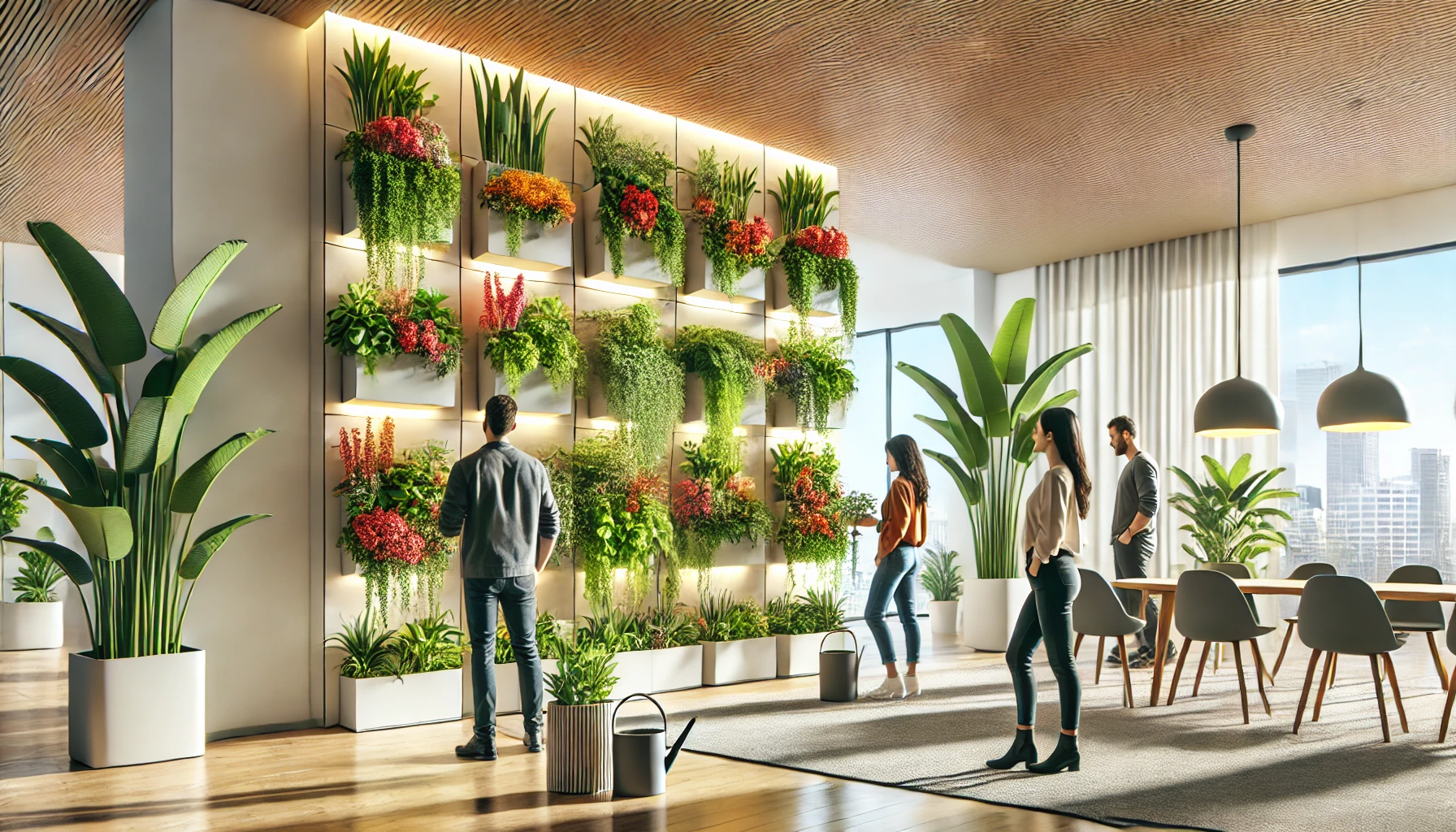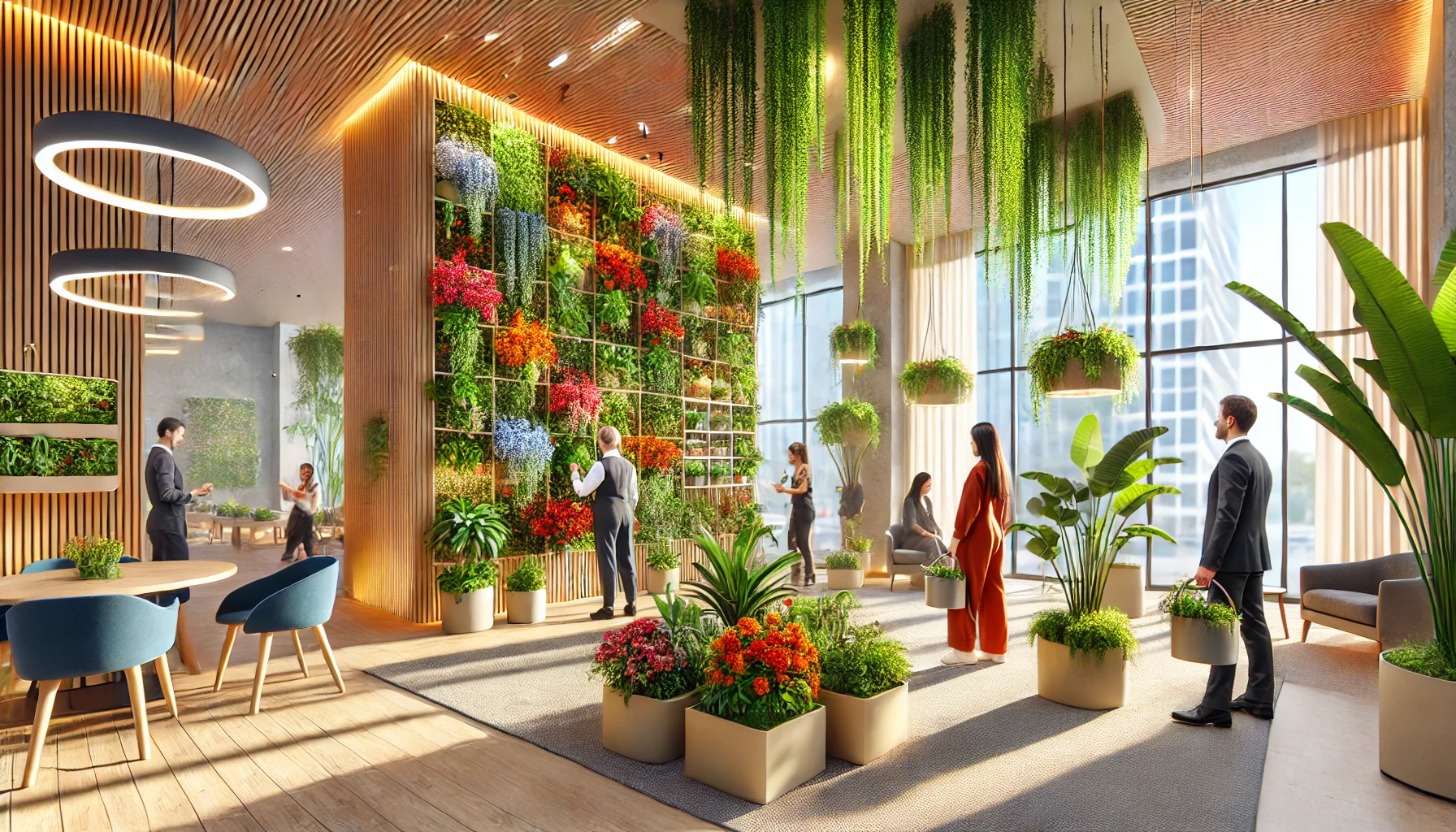Imagine transforming your living space with the magic of indoor vertical planters. These beauties let you bring the lushness of nature into your home without sacrificing precious floor space. Perfect for apartment dwellers and small home aficionados, vertical planters offer a green solution where space is at a premium.
So, what’s the big deal with ‘indoor vertical planters’? Well, these nifty setups allow you to grow a variety of plants upwards, making them an excellent option for adding that jungle vibe to any room. Think of them as plant skyscrapers – compact, efficient, and downright cool.
Indoor vertical planters aren’t just a pretty face; they’re functional too. They enhance air quality, bring vibrant colors to blank walls, and even lower stress levels by connecting us with the natural world. Whether you’re a budding plant parent or a horticultural hot shot, these planters can elevate your gardening game with minimal fuss and maximum flair.
Selecting the Right Planter: Enhancing Your Green Space
Picking the right planter for your indoor oasis is key to ensuring your plants thrive. With so many styles and materials available, it can be a jungle out there, but don’t worry—I’ve got some pointers to help you choose.
First up, think about the type of planter that complements your space. Traditional pots are classic, but if you’re tight on room, vertical options transform walls into lush canvases of greenery. Hanging planters can make a bold statement, while tiered designs offer multiple levels of planting goodness in one compact unit.
When it comes to materials, it’s all about finding what works best indoors. Ceramic and terra cotta keep it timeless with their natural vibe, although they can be a bit heavier. Metal and plastic provide modern flair and are often more lightweight. Whatever you pick, make sure it’s got good drainage to avoid swampy roots.
Comparing traditional horizontal setups with vertical ones can also guide your choice. Vertical planters save space and make a dramatic visual impact, ideal for herbs or ivy that love to cascade. Meanwhile, horizontal options provide stability and are great for bulkier plants needing room to spread their leaves.
Ultimately, choose what speaks to you and fits your style. The right planter can transform your home into a personal Eden, so it’s worth spending a bit of time to find that perfect match.
Are Vertical Planters Worth It? Evaluating the Benefits
Vertical planters stand out as a genius solution for those grappling with limited space. Imagine growing your green collection upwards, freeing up your floors and creating an eye-catching display on your walls. It’s like going from a small garden patch to a flourishing plant wall.
The space-saving aspect is just the start. Vertical planters add a unique aesthetic appeal to any room, transforming bland walls into vibrant botanical backdrops. With a mix of textures and colors, these planters can become the focal point of your decor.
Beyond the beauty, they offer real environmental perks. Indoor plants are known to boost air quality by filtering toxins and adding oxygen, creating a healthier living environment. Plus, having a vertical planter means more plants can do this job without taking up extra room.
So, are they any good? Absolutely. Vertical planters not only enhance your space aesthetically but also contribute positively to your indoor climate. For those keen on sustainability and style, these planters can be a great addition to any home.
Weighing the Drawbacks: Challenges of Vertical Gardens
While vertical planters come with a heap of benefits, they’re not without their hiccups. It’s important to know the challenges you might face, so you can tackle them head-on.
One potential issue is structural support. Depending on the weight and size of your planter, you may need to reinforce your walls or opt for a freestanding design to avoid crashes that could make your plant collection history fast.
Plant selection can also be limited. Not every plant species is a good fit for vertical growth. Tall plants or those with extensive root systems might struggle, so it’s smart to choose varieties known for adaptability in tighter spaces, like ferns, succulents, or some types of herbs.
Maintenance can be another hurdle. Keeping a vertical garden in tip-top shape may require regular check-ups for watering, pruning, and pest management. It’s not necessarily harder than traditional gardening, but it can demand a mindful approach to ensure every plant gets the care it needs.
Understanding these potential drawbacks lets you anticipate and solve problems before they arise. Workarounds, like selecting the right plants and ensuring strong support, can turn these challenges into mere bumps on the path to an amazing vertical garden.
Watering the Urban Jungle: Techniques for Vertical Gardens
Watering a vertical garden can be tricky, but with the right approach, it becomes a breeze. The key is understanding the unique needs of each plant and the layout of your planter.
Different plants have different hydration needs. Some love a good soak, while others prefer a light mist. Finding the balance is crucial. For example, succulents and cacti thrive with minimal watering, whereas ferns might need a bit more moisture.
Consider the placement of your plants in the vertical setup. Those at the top will often require more water since drainage tends to pull moisture downwards. Think about grouping plants with similar water needs together to make maintenance easier.
Self-watering systems can revolutionize vertical gardening. These setups use reservoirs and wicking mechanisms to provide consistent moisture levels, freeing you from daily watering duties. They’re awesome for busy lifestyles or if you tend to forget watering schedules.
Ultimately, the goal is to keep your plants happy without over-or under-watering. Observing your plants regularly will help you tune in to their specific needs, making adjustments as needed for a thriving green wall.
Expert Tips on Sustainable Indoor Planting
Going green indoors is not just a trend but an essential step toward a sustainable lifestyle. Vertical planters play a pivotal role in this journey, offering you room to cultivate a delightful indoor forest without hogging precious floor space.
Use renewable materials whenever possible. Opt for planters made from recycled materials or sustainably sourced wood. This choice not only supports the environment but also brings a touch of nature into your home with authenticity.
Keeping your vertical planter thriving with minimal effort is all about choosing the right plants. Native plants or those adapted to indoor environments typically require less water and maintenance, cutting down your gardening chores.
Automation is your friend. Modern technology offers smart systems for watering and lighting that can be programmed to match your plants’ needs, ensuring they’re always in the best conditions without daily intervention.
Healthy plants mean happier living spaces. Regularly clean your planter and remove any dead leaves or pests to maintain a vibrant ecosystem. These small acts preserve the health of your mini indoor jungle and keep it looking fantastic.
These tips help you not just maintain, but truly enjoy your indoor vertical garden. By adopting sustainable practices and smart gardening tools, you’re fostering a green space that’s good for you and the planet.

Conclusion: A Greener Tomorrow with Vertical Planting
Indoor vertical planters are more than just a trend—they’re a gateway to a greener, more conscious lifestyle. By bringing nature indoors, you create a sanctuary that improves your living environment while making a commitment to sustainability.
Adding a vertical garden to your space isn’t just about aesthetics, but also about fostering a healthier home. These planters are perfect for those looking to maximize space while reducing their carbon footprint.
Ready to make the leap? Vertical planting offers an opportunity to experiment with different plant types, creating personalized green havens that cater to your tastes and needs.
Encourage yourself to explore vertical planters, as they’re a step toward embracing nature within your living space. This journey creates rewarding and sustainable living environments that benefit you and the planet.


Hi Herman –This article got me thinking—I have not met a person (friend or acquaintance) who has vertical planters. Vertical planters appear to take more time to set up and maintain in my view. Plus, the plant selection is limited, which is a negative in my view. I will continue to use horizontal planters because of the ease of setup, plant choice, and aesthetics.What indoor plants do you prefer? How do you maintain an indoor vertical garden in terms of watering and lighting?
G
I appreciate your thoughts! You’re right—vertical planters do require some setup, but once they’re in place, they can actually be quite low-maintenance. The key is choosing the right system and plants that thrive in a vertical setup. While plant selection can be more limited compared to traditional horizontal gardens, there are still plenty of great options, especially for herbs, leafy greens, and compact flowering plants.
For indoor vertical gardens, I personally like low-maintenance plants such as pothos, ferns, and herbs like basil and mint. As for maintenance, I use a drip irrigation system or self-watering planters to simplify watering. Proper lighting is also crucial—if there’s not enough natural light, I supplement with grow lights to keep the plants healthy.
What plants do you usually grow in your horizontal planters? I’d love to hear about your experience!